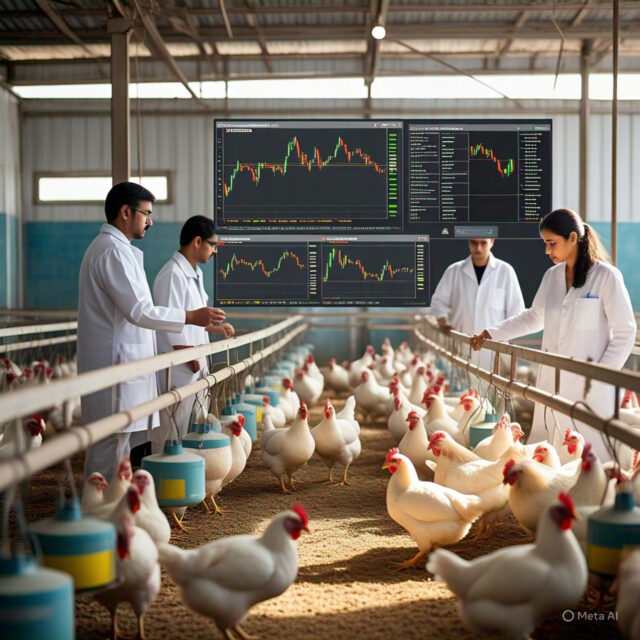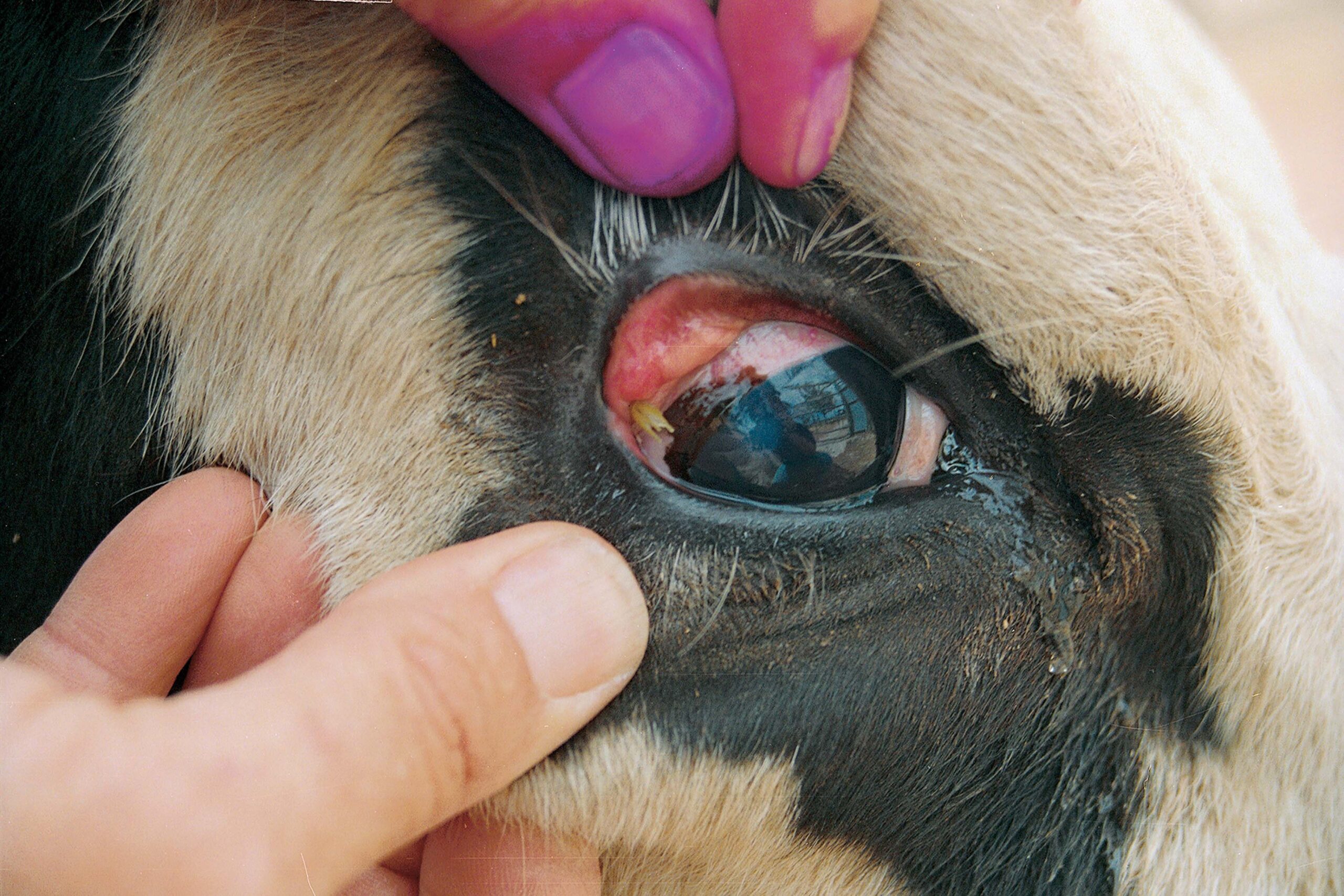
AI and Big Data in Poultry Disease Prediction: Transforming Poultry Health Management
Introduction
The global poultry industry faces constant challenges from disease outbreaks, which can lead to severe economic losses and food supply disruptions. Traditional disease monitoring methods, such as manual health checks and periodic laboratory tests, often detect infections only after symptoms appear, leading to delays in response and increased mortality rates. However, the integration of artificial intelligence (AI) and big data analytics is revolutionizing disease prediction and prevention in poultry farming. These cutting-edge technologies enable early detection of potential outbreaks, allowing farmers and veterinarians to take proactive measures, improve flock health, and enhance productivity.
The Role of AI in Poultry Disease Prediction
Artificial intelligence, through machine learning (ML) and deep learning (DL) algorithms, can process vast amounts of data and identify patterns that may indicate the onset of disease before clinical symptoms become visible. AI-powered disease prediction models analyze historical and real-time data from various sources, such as environmental sensors, flock behavior, and veterinary records, to detect anomalies that could signify a health threat.
1. AI-Driven Behavioral Analysis
One of the most promising applications of AI in poultry disease prediction is behavioral analysis. AI-powered cameras and sensors can monitor the movement, feeding patterns, and social interactions of birds. Any deviations from normal behavior, such as reduced activity, increased isolation, or decreased feed consumption, can be flagged as potential early indicators of disease.
For example, AI-driven systems have been developed to analyze the gait of chickens to detect lameness, which can be a sign of bacterial infections or nutritional deficiencies. By identifying such issues early, farmers can intervene before the disease spreads.
2. Environmental Monitoring and AI Analytics
Poultry diseases are often linked to environmental factors, such as temperature fluctuations, humidity levels, and air quality. AI-powered sensors continuously collect and analyze data on these variables, detecting any adverse changes that could contribute to disease outbreaks.
For instance, high ammonia levels in poultry houses can lead to respiratory infections. AI algorithms can analyze real-time sensor data and issue alerts when ammonia levels exceed safe thresholds, prompting immediate corrective actions such as adjusting ventilation or cleaning litter more frequently.
3. Predictive Analytics for Disease Outbreaks
AI models trained on historical disease outbreak data can predict future outbreaks based on current farm conditions. By incorporating data on past disease occurrences, weather patterns, and biosecurity practices, these models provide farmers with risk assessments and recommend preventive measures.
For example, AI systems can analyze weather data to predict the likelihood of an avian influenza outbreak, as certain environmental conditions favor the virus’s spread. Armed with this information, farmers can implement stricter biosecurity protocols to minimize risks.

Big Data and Its Impact on Poultry Health Management
Big data refers to the vast volumes of structured and unstructured data generated in poultry farming, including:
- Flock health records
- Feed intake and nutritional data
- Environmental conditions
- Veterinary diagnostics
- Disease outbreak reports
By integrating and analyzing this data, big data analytics helps improve disease prediction, enhance decision-making, and optimize poultry management strategies.
1. Real-Time Data Collection and Analysis
Traditional disease monitoring relies on manual record-keeping and sporadic testing, which can lead to delays in detecting outbreaks. With big data analytics, real-time data is collected from multiple sources, processed instantly, and used to generate actionable insights.
For example, cloud-based platforms can aggregate data from multiple poultry farms, allowing veterinarians to identify regional disease trends and recommend preventive measures based on broader patterns rather than isolated cases.
2. Disease Mapping and Geographic Analysis
Big data analytics can help visualize disease outbreaks geographically, providing a clearer understanding of how infections spread. Geographic information systems (GIS) integrated with AI can map disease patterns across different regions, helping authorities and farmers implement targeted interventions.
For instance, if an outbreak of Newcastle disease is detected in a specific area, AI-powered disease mapping can help identify farms at risk and guide vaccination campaigns accordingly.
3. Automated Decision Support Systems
Big data analytics can also power decision support systems that provide recommendations based on predictive models. These systems assist farmers in making informed decisions regarding disease management, vaccination schedules, and treatment protocols.
For example, if AI predicts an increased risk of coccidiosis in a particular season, the decision support system may recommend adjusting feed formulations or administering preventive medications to reduce the likelihood of infection.
AI-Powered Early Warning Systems
Early warning systems powered by AI and big data analytics play a crucial role in disease prevention. These systems use predictive modeling, anomaly detection, and real-time alerts to warn farmers about potential health threats before they escalate.
1. AI-Based Chatbots and Virtual Assistants
AI-driven chatbots and virtual assistants provide farmers with instant access to disease management advice. By analyzing symptoms reported by farmers, these AI tools can suggest possible diagnoses and recommend appropriate actions, reducing the time required for veterinary consultations.
2. Blockchain Technology for Disease Tracking
Integrating AI with blockchain technology enables transparent and tamper-proof disease tracking. Blockchain-based poultry health records allow seamless data sharing between farmers, veterinarians, and regulatory authorities, facilitating rapid response to outbreaks and ensuring food safety compliance.
Challenges and Future Prospects
Despite the numerous advantages of AI and big data in poultry disease prediction, several challenges need to be addressed:
- Data Quality and Integration: Inconsistent data collection methods and lack of standardized formats can hinder accurate analysis.
- High Implementation Costs: The initial investment in AI-powered systems may be expensive for small-scale farmers.
- Technological Adaptation: Many poultry farmers may require training to effectively use AI and data analytics tools.
However, with continuous advancements in AI technology and increasing affordability of smart farming solutions, the adoption of AI-driven disease prediction systems is expected to grow. Future developments may include:
- AI-powered wearable health monitors for poultry that track vital signs and detect health anomalies in real-time.
- Improved AI-driven diagnostic tools that provide instant disease detection using image analysis and deep learning.
- Integration of AI with Internet of Things (IoT) devices, enabling more precise monitoring of poultry health conditions.
Conclusion
AI and big data analytics are transforming poultry disease prediction by enabling early detection, improving biosecurity, and optimizing farm management practices. By harnessing these advanced technologies, poultry farmers can reduce disease-related losses, enhance animal welfare, and ensure a sustainable and profitable poultry industry. As AI and big data continue to evolve, their role in disease prevention will become even more integral, paving the way for smarter, healthier, and more efficient poultry farming.




























